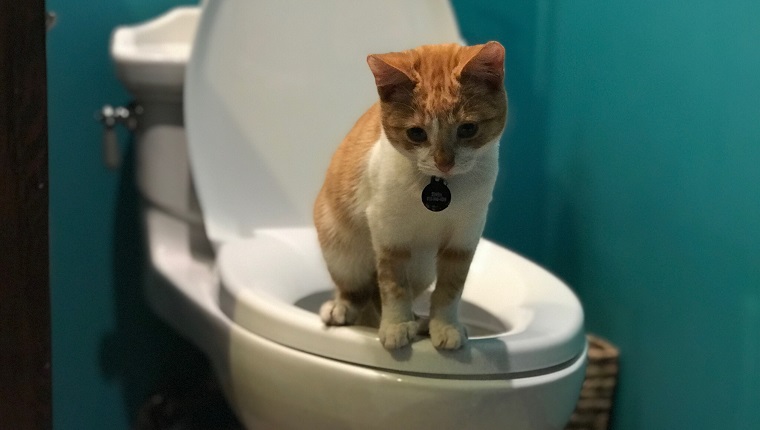Why You Should Avoid Flush Cat Poop Down Your Toilet - Crucial Information
Why You Should Avoid Flush Cat Poop Down Your Toilet - Crucial Information
Blog Article
Just how do you really feel in regards to How to Dispose of Cat Poop and Litter Without Plastic Bags?

Intro
As feline owners, it's vital to bear in mind exactly how we take care of our feline pals' waste. While it might seem hassle-free to purge pet cat poop down the bathroom, this technique can have detrimental consequences for both the atmosphere and human wellness.
Ecological Impact
Purging pet cat poop presents damaging microorganisms and parasites right into the water, positioning a significant threat to water ecological communities. These contaminants can negatively impact marine life and concession water quality.
Wellness Risks
In addition to ecological problems, purging cat waste can also position health risks to people. Feline feces might have Toxoplasma gondii, a parasite that can trigger toxoplasmosis-- a possibly serious health problem, especially for pregnant women and individuals with weakened immune systems.
Alternatives to Flushing
The good news is, there are more secure and much more liable ways to deal with feline poop. Think about the following options:
1. Scoop and Dispose in Trash
One of the most usual method of taking care of pet cat poop is to scoop it into a biodegradable bag and throw it in the trash. Be sure to use a specialized trash scoop and throw away the waste immediately.
2. Use Biodegradable Litter
Choose naturally degradable cat clutter made from products such as corn or wheat. These trashes are environmentally friendly and can be securely disposed of in the garbage.
3. Bury in the Yard
If you have a backyard, take into consideration burying pet cat waste in an assigned area away from vegetable gardens and water sources. Be sure to dig deep adequate to avoid contamination of groundwater.
4. Set Up a Pet Waste Disposal System
Purchase a family pet garbage disposal system especially created for cat waste. These systems make use of enzymes to break down the waste, minimizing odor and environmental influence.
Conclusion
Accountable family pet possession expands beyond supplying food and sanctuary-- it additionally involves correct waste monitoring. By refraining from purging cat poop down the toilet and going with alternate disposal approaches, we can decrease our environmental impact and safeguard human wellness.
Why You Should NEVER Flush Cat Poop (and/or Litter) Down Your Toilet
The Problem with Litter
The main function of litter is to solidify and adhere to your cat’s waste. While this makes litter excellent for collecting cat poop and urine, it’s also the exact property that makes it a nightmare when flushed down the toilet.
Cat litter can and will clog pipes. There is non-clumping litter, but it’s still quite heavy and can build up in pipes. This is true even of supposed “flushable litter.”
The problems only compound when the litter is already clumped into cat waste. Toilet paper is among the more flushable things, and even too much of that will clog a toilet.
The Problem with Cat Poop
Sewers and septic systems are designed with human waste in mind. The microbes that help break down human waste don’t work on cat waste. Additionally, cat poop plays host to the parasite Toxoplasma gondii.
When flushed, this parasite can enter the environment in places it was never meant to, posing a risk to pregnant women, their unborn children, and other people with compromised immune systems. While it might not seem possible, flushing cat poop can indeed introduce this parasite to the public water supply.
These reasons are why, even if you’ve trained your cat to go on the toilet and flush, which is possible, it’s still not a good idea. Also, pregnant women and the immunocompromised shouldn’t change litter, either.
How to Handle Litter
The best way to handle litter is to simply put it in a plastic bag and place it in the trash. Avoiding environmental risks and possible plumbing damage is worth the extra effort.
You can also invest in devices that seal away your cat’s waste in a separate compartment, so you don’t have to change the litter nearly as often. They’re also safer for pet owners because they limit the possibility of Toxoplasma gondii exposure.
Disposing of litter the old-fashioned way will ensure you won’t have to worry about any issues that flushing the waste can potentially cause.
Take Care of Clogged Pipes with Stephens Plumbing, Heating & Air Conditioning
The reasons you should never flush cat poop down your toilet are numerous, but sometimes the inevitable happens despite your best efforts.
Stephens Plumbing, Heating & Air Conditioning is ready to help if you’re experiencing litter-blocked plumbing. Whether you need us in an emergency or want to schedule regular maintenance, we’re here for you.
https://www.stephensplumbing.net/bathroom-plumbing/never-flush-cat-poop-down-your-toilet/

Hopefully you enjoyed reading our topic on How to Dispose of Cat Poop and Litter Without Plastic Bags. Thanks so much for finding the time to browse our article post. Be sure to set aside a second to share this write-up if you liked it. Thanks a lot for going through it.
Book Instantly Report this page